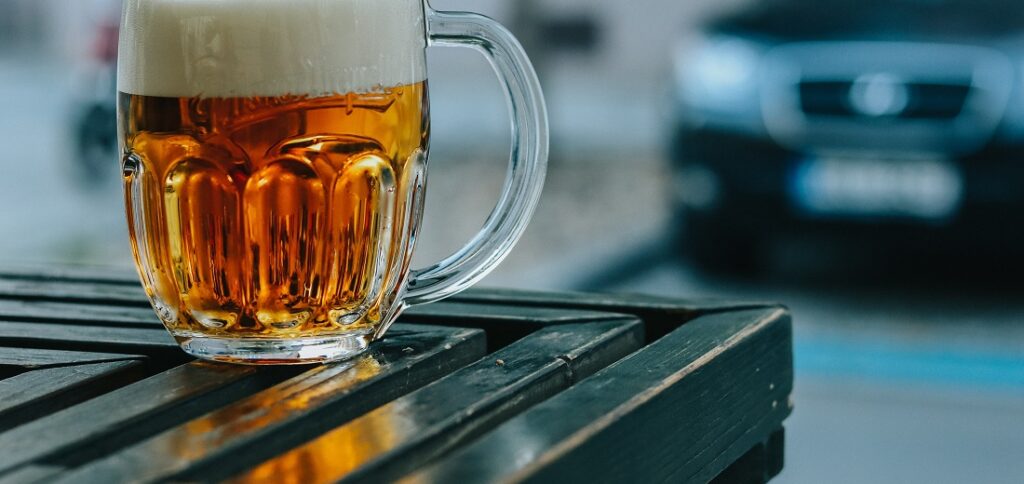Alcohol consumption and the promotional tool “smart drinking”

In 2011, American scientists published an article entitled “A Drink Best Not Served” discussing the influence of the alcohol industry on public health organizations. At the heart of the article was the conflict of interests between the priorities of the public health system and the objective of profit-oriented companies to sell more alcohol. A paradigm shift was needed – toward a culture of responsible drinking, or smart drinking, for those who choose to drink.
The goal of enjoying alcohol responsibly
In 2013, 13 of the world’s leading beer, wine and spirits manufacturers banded together to form the “International Alliance for Responsible Drinking” (IARD). Their goal: to actively support the reduction of harmful alcohol consumption and alcohol abuse by at least 10 percent through self-imposed measures and liabilities.
Nevertheless, the “smart drinking” business model needs to be profitable and economically viable for the beverage industry. Non-alcoholic and alcohol-reduced products increasingly came to the fore of various marketing measures. These products – in particular non-alcoholic beer – became an advertising tool for international producers.
Growth predicted for non-alcoholic beer
In 2020, the global non-alcoholic beer market was estimated at around USD 18 billion. In the coming years, the world market is expected to grow at a compound annual growth rate (CAGR) of 7.5% and reach a value of around USD 25 billion by 2024.
Since non-alcoholic beers are not subject to beer tax in Germany and are therefore not recorded statistically, absolute figures on production, sales and exports are few and far between.
Data from the Federal Statistical Office shows that the production volume of non-alcoholic beers doubled in the period from 2009 to 2019, while mixed beer beverages grew by around 30% over the same ten-year period.
There is no distinction between types, malt drinks or non-alcoholic mixed beer drinks. Data on the structure of the European and global market is available through analyses of international market research and management consultancies or on a voluntary basis as information material from relevant associations.
Spin-off beverages for “smart drinking”
The popularity of alcohol-free beers has also led to the rise of other alcohol-reduced and non-alcoholic products, whose original names can be traced back to alcoholic beverages (see Fig. 1).
The slightly more widespread non-alcoholic sparkling wine, gin and cider as well as alternatives to amaretto and rum are “non-alcoholic spin-offs” in the fast-moving consumer goods sector. The term “spin-off” is defined as a collateral or derived product, for example by adopting technically innovative processes or products in other areas. The high degree of diversity gives manufacturers and product developers a relatively large amount of leeway with regard to the aroma impression, thanks to the lack of specifications, fixed standards and consumer expectations.

In terms of their market shares, however, the drinks listed are purely niche products compared to non-alcoholic beer. With around 10%, the market share for top- and bottom-fermented non-alcoholic beers is significantly higher than the market shares for non-alcoholic wine (1%) and sparkling wine (5%).
Nonetheless, non-alcoholic wine meets the spirit of “smart drinking” and, according to an industry magazine, has more of a female and more affluent target group. Compared to non-alcoholic beer, the price acceptance for the non-alcoholic counterparts of wine and spirits is also higher. Non-alcoholic spirits are usually placed in the premium segment, which is often backed by start-ups. Companies with a broad portfolio prefer to introduce such products as new brands in order to meet customers striving for individuality and to awaken their spirit of discovery.
Conclusion: more alternatives for those who abstain
Choosing not to drink doesn’t make you a wet blanket. Those who prefer to stay sober can enjoy an increasing number of alternatives. The book title “Sober Curious” is used as an expression to describe the trend towards abstinence
Would you like to find out about current trends on the beverage market and exchange professional information? Then we invite you to take part in the next drinktec, which will be held in Munich from September 12 to 16, 2022.
This article is powered by Verlag W. Sachon.
